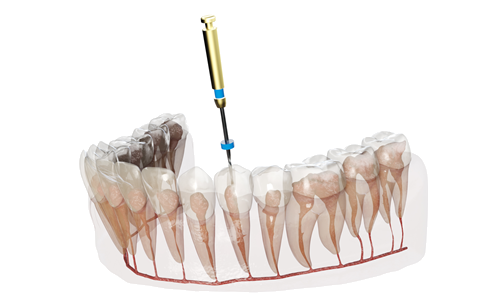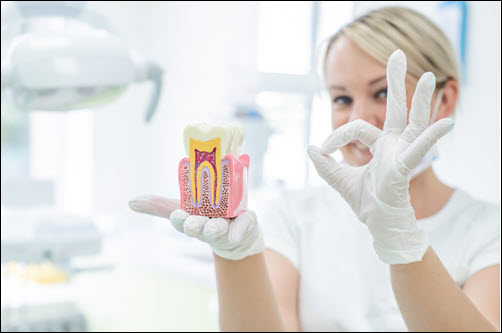Do just the words “root canal therapy” make you cringe or cause you to pause? If so, you are not alone. However, it is one of the most commonly performed procedures in the dental field. There are over 15 million root canals done annually. But they are one of the most misunderstand-by patients- procedures performed.
What is a Root Canal?
Patients of all ages can need . Performed by either your dentist or an endodontist, it relieves pain caused by an abscessed tooth or infection. It involves removing the inflamed root, cleaning, and disinfecting the area then adding a filling.
Signs You Need a Root Canal
 While individual symptoms may vary, there are signs that, if experienced, you will want to schedule a dentist appointment.
While individual symptoms may vary, there are signs that, if experienced, you will want to schedule a dentist appointment.
- Swollen or tender gums
- Pimples on the gums
- Deep decay or dark areas on the gums
- A cracked or chipped tooth
- Sensitivity to hot or cold, even after the element is no longer near the gum.
- Severe pain while chewing or biting
- Swollen jaw
- Tooth discoloration
- Loose tooth
- Lasting tooth pain
- Pain when there is pressure
Understanding Root Canal Therapy
Many think a root canal therapy or treatment is painful. However, it is actually done to be a pain-relieving treatment. It usually takes between 30 -60 minutes, though in some cases might take more than one visit.
If you are having root canal therapy, it is important you follow the pre-visit instructions. These preemptive actions will include taking the prescribed antibiotic or anti-inflammatory meds, eating a healthy meal a few hours before the procedure, and not smoking (if applicable) for several days before the procedure.
 The 3 steps of root canal therapy.
The 3 steps of root canal therapy.
- The root canal is cleaned. After administering local anesthesia, your healthcare provider will make a small access hole. They then remove anything damaged, diseased, or dead.
- The filling process. Next, the dentist will shape and decontaminate the hollow area. The tooth is filled with a rubber-like material called gutta-percha, then sealed with adhesive cement.
- The crown is added. At this point, the tooth is fragile, so it is necessary to add a crown to protect the spot. The crown allows you to resume normal activities.
Upon root canal therapy completion, the nerve tissue is gone, and the tooth is dead. There will be no more infection or pain in that tooth “space”. It is then up to you to follow your dentist/endodontist’s aftercare steps.
Root canal therapy is beneficial for you and makes a difference in how you feel. So, don’t put it off. If you are experiencing any of the symptoms listed, schedule an appointment today.

